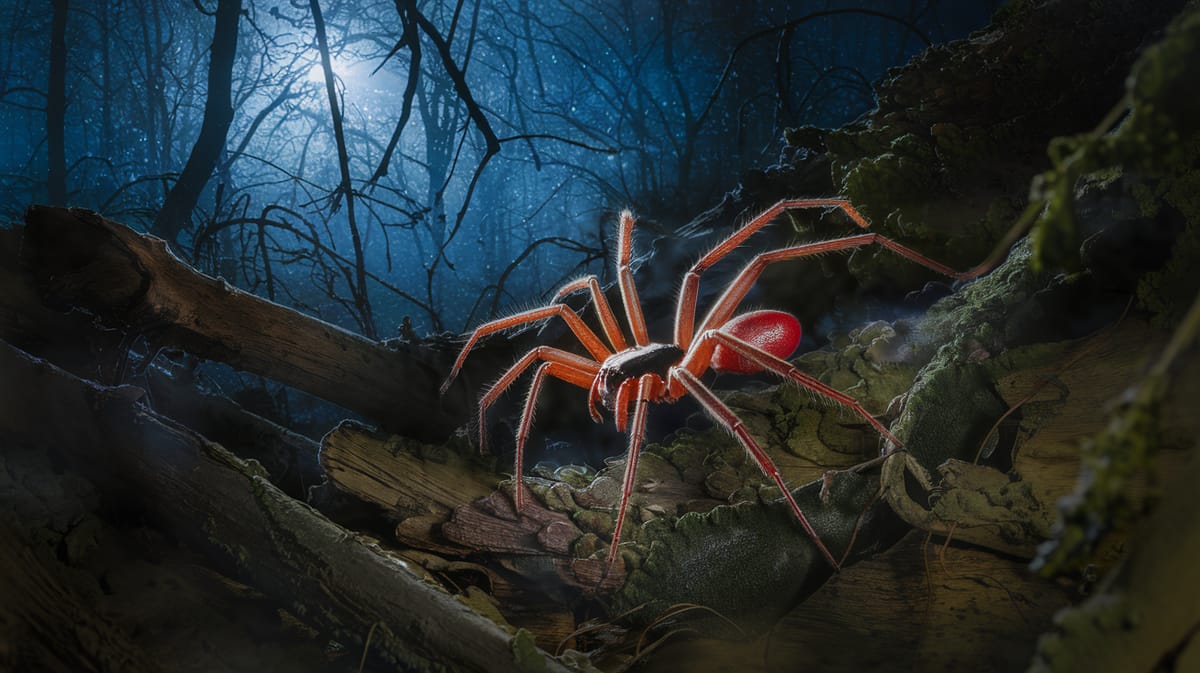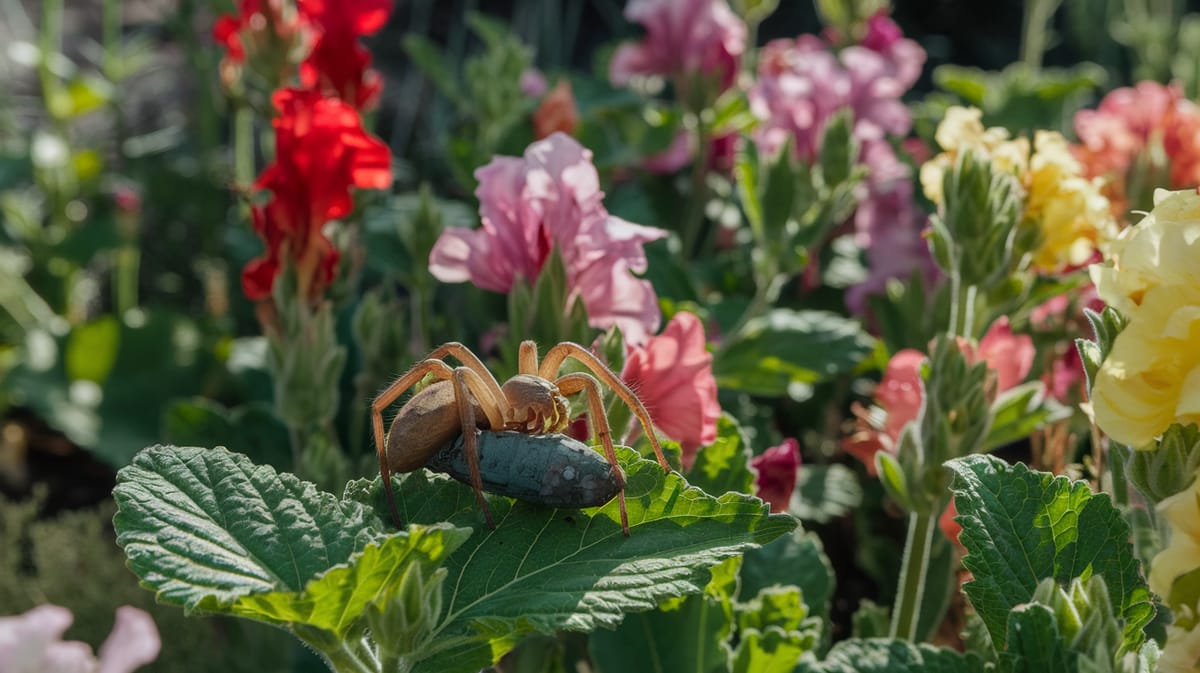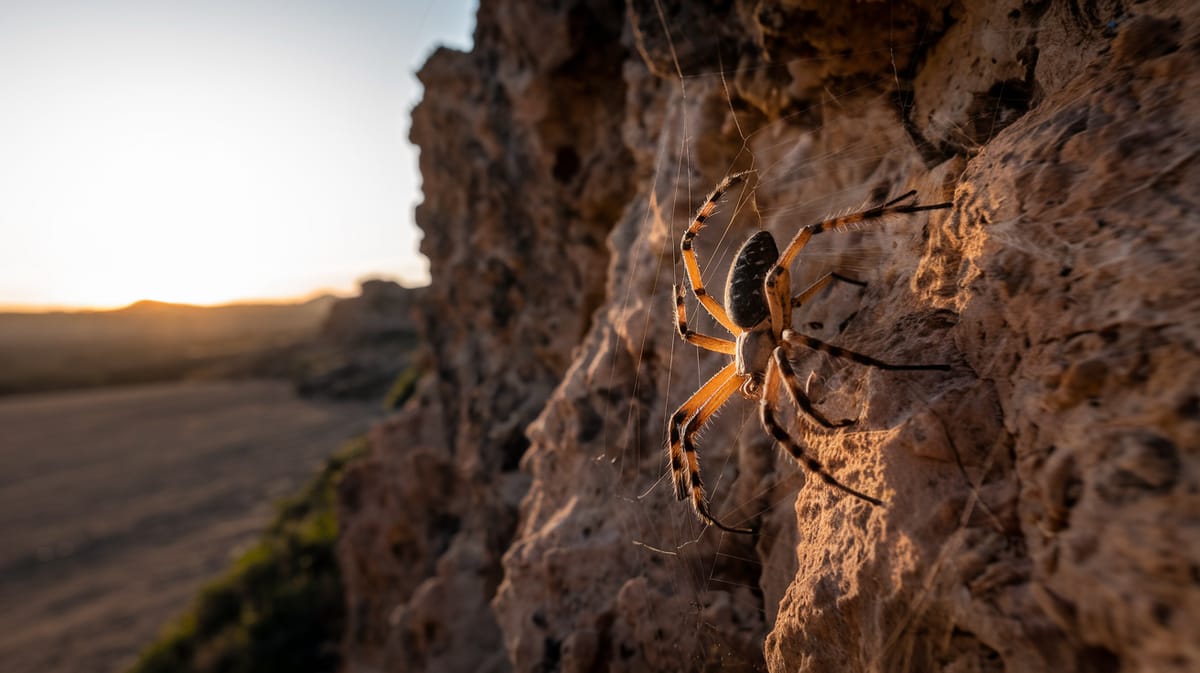Woodlouse Spider
Fierce predator with crimson fangs, the Woodlouse Spider excels at hunting its prey at night. Known for its preference for damp habitats, it plays a vital role in controlling woodlouse populations.

Key Insights at a Glance
Did You Know?
Taxonomy & Classification
Woodlouse spiders are specialized hunters with powerful jaws and distinct red cephalothoraxes, adapted to hunt woodlice in dark, damp environments. Let's understand the evolutionary journey and classification of these remarkable predators.
Species Diversity
The Dysdera genus includes roughly 250 species, primarily found in Europe, showcasing adaptability to various microhabitats.
Ancient Origins
Originating in the Paleogene period, Dysdera spiders have thrived for over 30 million years, evolving unique predation techniques.
Lifecycle and Growth
A remarkable journey of transformation from Egg to Adult.
Egg
Eggs are laid in a silk sac, providing protection as they develop into spiderlings ready to hatch.
Juvenile
Juveniles emerge from eggs, resembling adults but smaller, gradually growing and shedding their exoskeleton through several molts.
Adult
Adults exhibit strong predatory skills, using large fangs to hunt woodlice and other small invertebrates in dark, damp spaces.
Dietary Habits
A nocturnal predator with specialized fangs, it primarily targets specific prey, using agility and stealth in its hunting approach.
| DIET TYPE | DESCRIPTION |
|---|---|
| Primary Diet | Regularly preys on woodlice, using its strong fangs to pierce the exoskeleton and consume the soft body. |
| Secondary Diet | Occasionally consumes other small arthropods like beetles or ants when its preferred prey is scarce. |
| Occasional | Rarely eats small insects found in its environment, displaying flexibility in its diet under special conditions. |

Behaviour and Adaptations
Discover the fascinating traits of the Woodlouse Spider that ensure its survival.
Powerful Jaws
Specialized fangs pierce woodlouse armor effectively.
Nocturnal Hunting
Hunts primarily at night, optimizing prey capture.
Silk-Free Ambush
Uses stealth instead of webs to catch prey.
Ecosystem Impact
The Woodlouse Spider plays a crucial role in maintaining ecological balance through its unique predatory habits.
Natural Pest Control
Preys on woodlice, helping to control their populations and prevent habitat overpopulation.
Soil Aerator
By hunting underground, it aids in soil aeration, improving soil health and plant growth.
Biodiversity Supporter
Provides a food source for various predators, contributing to a diverse and balanced ecosystem.
Conservation Challenges
Understanding and addressing the major threats to Woodlouse Spider populations.
Habitat Destruction
Urban development reduces natural habitats for Woodlouse Spiders.
Chemical Exposure
Pesticides disrupt the spider's prey availability and health.
Climate Change
Altered weather patterns affect spider habitat and prey.
Frequently Asked Questions
How long do Woodlouse Spider live?
Woodlouse spiders typically live for about two years. They spend most of their life in damp environments where they can find their prey. Their lifespan may vary slightly based on environmental conditions and availability of food.
What do Woodlouse Spider eat?
Woodlouse spiders primarily feed on woodlice, which are small crustaceans found in moist habitats. They use their powerful fangs to pierce the exoskeleton of their prey. This specific diet gives them their name.
Are Woodlouse Spider poisonous?
Woodlouse spiders are venomous, but their venom is not dangerous to humans. Their bite might cause mild irritation and redness, similar to a bee sting, but it is not medically significant.
Are Woodlouse Spider endangered?
Woodlouse spiders are not considered endangered. They are commonly found across Europe and North America, thriving in a variety of habitats where their prey, woodlice, are abundant.
What do Woodlouse Spider symbolize?
Woodlouse spiders do not hold any significant symbolic meaning in most cultures. They are primarily noted for their role in controlling woodlice populations and their unique appearance.
Do Woodlouse Spider bite?
Yes, woodlouse spiders can bite if provoked. Their bite is not harmful to humans, causing only minor symptoms like redness and slight swelling. They prefer to avoid human interaction.
What color are Woodlouse Spider?
Woodlouse spiders are reddish-brown with a shiny, dark brown abdomen. Their distinctive coloration helps them blend into their natural environment, such as leaf litter and under rocks.
Does a Woodlouse Spider have wings?
No, woodlouse spiders do not have wings. They are ground-dwelling creatures that rely on their agility and speed to catch prey. Like most spiders, they use silk for making retreats rather than for flight.
What does a Woodlouse Spider look like?
A woodlouse spider has a reddish-brown cephalothorax, dark brown abdomen, and long, robust legs. They are medium-sized, with their body length ranging from 10 to 15 millimeters. Their large fangs are notable features.
Is a Woodlouse Spider an insect?
No, a woodlouse spider is not an insect. It is an arachnid, which is a class of joint-legged invertebrates that also includes scorpions, ticks, and mites. Unlike insects, spiders have eight legs and two main body segments.
Related Insects
Discover insects with similar characteristics to Woodlouse Spider - including shared habitats, diets, and taxonomic classifications
Share this profile
Help others discover Woodlouse Spider
